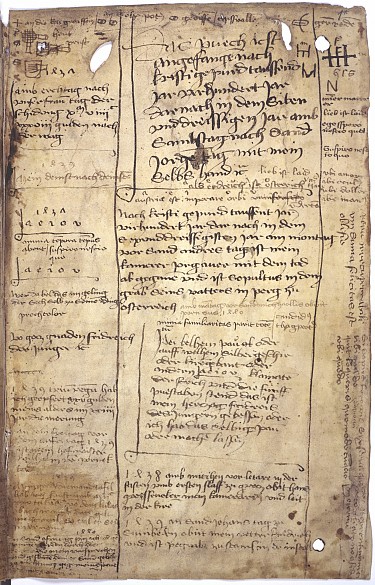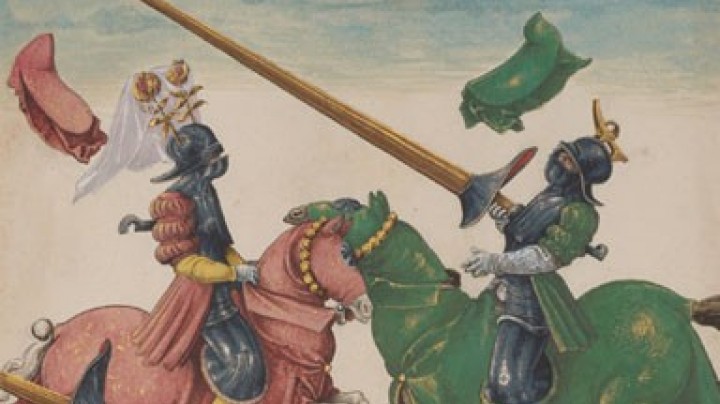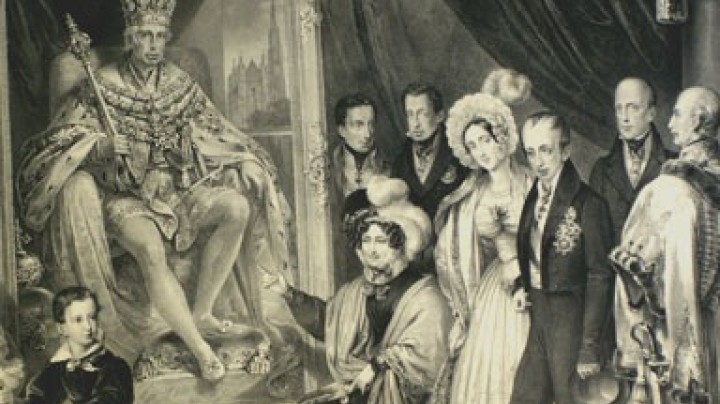AEIOU
The cryptic formula AEIOU is an enigma that has occupied generations of historians. Unfortunately, its creator, Emperor Frederick III, never revealed exactly what he meant by it.
Zitiert nach Lhotsky, Alphons: AEIOU. Die "Devise" Kaiser Friedrichs III. und sein Notizbuch. In: Mitteilungen des Instituts für österreichische Geschichtsforschung 60 (1952) 155-193, hier S. 166Pei belhem pau oder auff welhem Silbergeschir oder kircngebant oder andern klainaten aeiou der strich und die funff puestaben, stend, das ist mein, herczog Friedreis des Jungern, gebessen oder ich hab das selbig paun oder machen lassen.
(Whatever building or silver plate or liturgical robe or other treasure shows the line and the five letters making up the device AEIOU is my property, Duke Frederick the Younger, or I caused them to be built or made.)
The famous vowel sequence is found on countless artworks, books, buildings, etc., that are associated with Frederick. He used this sequence of letters to mark the things he cherished, sometimes even in his own hand, in keeping with the late medieval vogue for and delight in codes, cryptograms, impresi and apotropaic magic.
Frederick’s whim for stamping everything with his mark of ownership was universally known, but even his contemporaries had no idea what it meant. Over the course of history, more than 300 interpretations have emerged, ranging from the gravity of state concerns to contemptuous malice, from scholarly humanist allusions to occult decryptions.
From the Habsburg point of view, Frederick’s personal device was seen as a mystical symbol of dynastic self-manifestation. However, the first documented occurrence of the device was in 1437, when Frederick was as yet merely Duke of Styria; his later ascent to the head of the House of Habsburg and Holy Roman Emperor was not yet on the cards.
The assumption that Frederick’s device aimed to express the claim of universal power dates back to the seventeenth century, when the Habsburgs really had advanced to become a great power and were revelling in Baroque symbolism. In 1666 Frederick’s notebook, long believed lost, was discovered – and the ruling emperor Leopold I was very open to allegorical allusions.
In the notebook we can read in Frederick’s own hand that all the artworks and liturgical items he owned and the building projects he had initiated were to be marked with the vowel sequence (together with a framing loop). Another entry in the notebook (albeit in another hand) purports to divine the meaning of the device as ‘Alles Erdreich ist Österreich untertan’ (All the earth is subject to Austria), or the Latin version: ‘Austriae est imperare orbi universo’. Thus everyone thought the authentic interpretation had been found.
Things aren’t all that straightforward, however: in the same book we find another interpretation, a distich or couplet; in the first verse the initials are those of the vowel sequence: ‘En, amor electis, iniustis ordinor ultor; Sic Fridericus ego mea iura rego’ freely translated as: ‘See, I am loved by the elect, I am feared by the unjust; hence I, Frederick, rule legitimately.’
According to the latest research results, this decoding of the mythical vowel series AEIOU is now the solution to the riddle.














